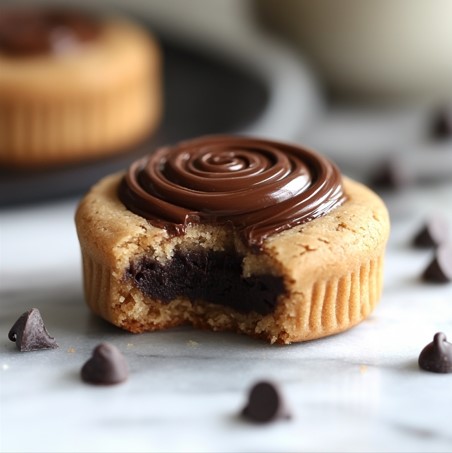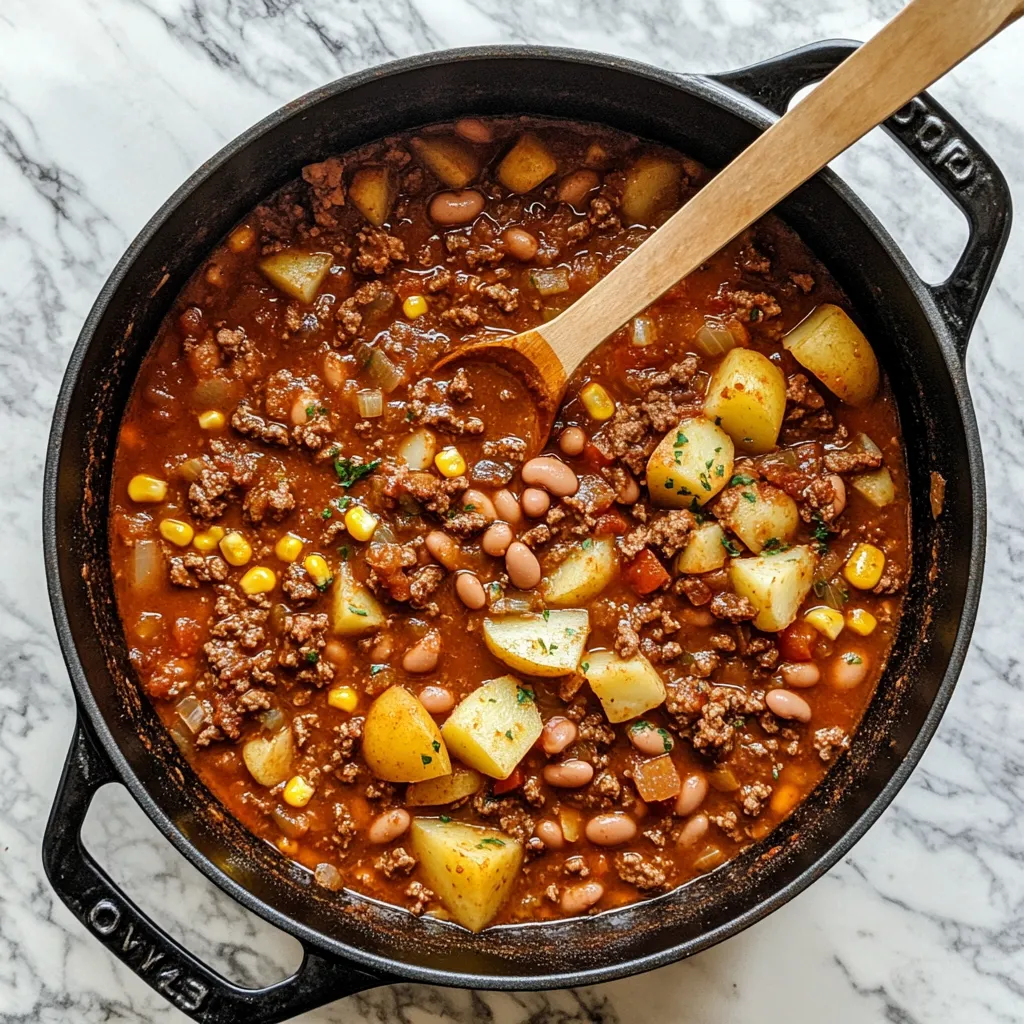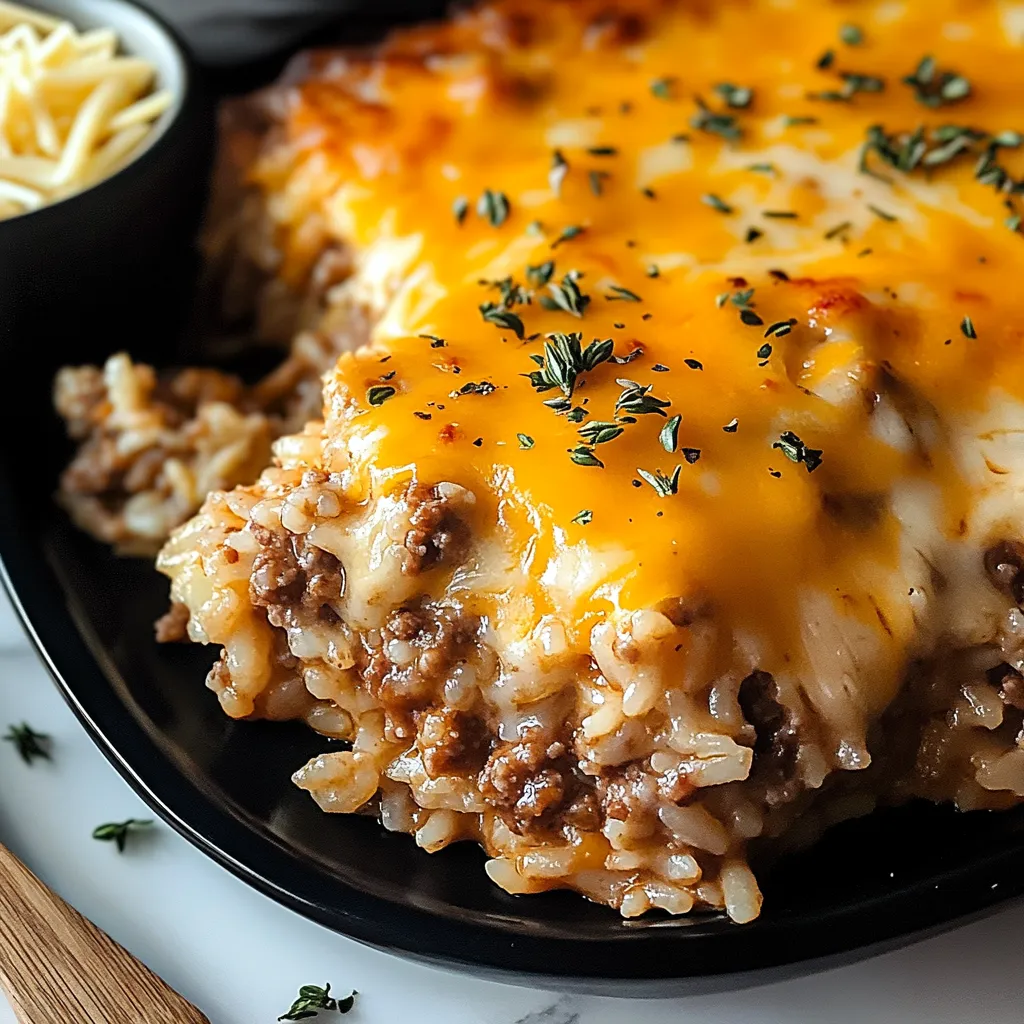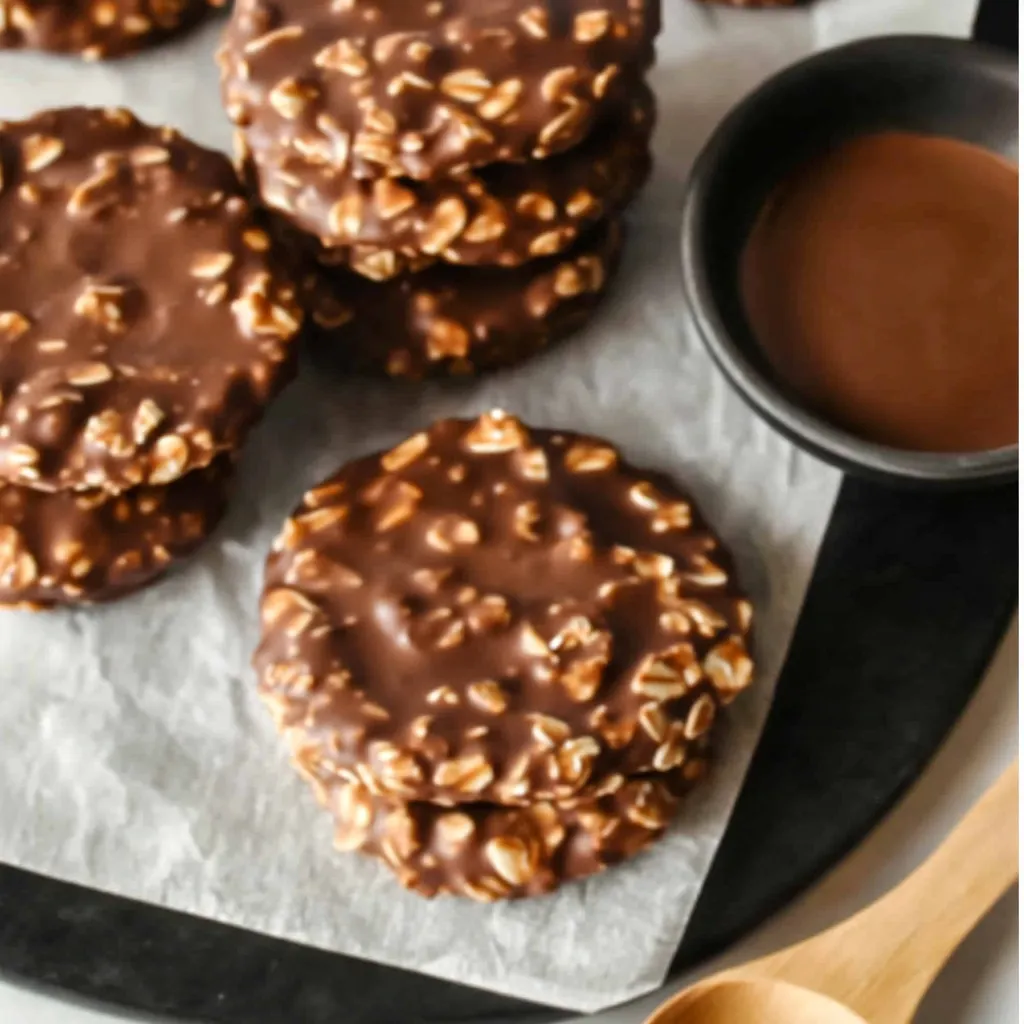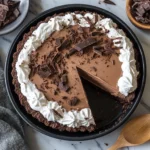Peanut Butter Brownie Swirl Cookies are the ultimate treat for anyone who loves the classic flavors of peanut butter and chocolate. These cookies combine the rich, creamy taste of peanut butter with the decadent, fudgy texture of brownies, creating a delightful fusion that satisfies every sweet craving. What sets these cookies apart is their striking appearance: a beautiful swirl of golden peanut butter dough intertwined with deep chocolatey brownie, creating a marbled effect that’s as pleasing to the eyes as it is to the taste buds. The contrast between the soft, slightly chewy peanut butter sections and the dense, fudgy brownie bites offers a unique textural experience in every bite. Whether you’re a fan of peanut butter, chocolate, or both, these cookies offer the best of both worlds in one irresistibly delicious package. Perfect for any occasion, these swirled cookies are sure to impress both in flavor and presentation.
Ingredients Breakdown
Peanut Butter Dough Ingredients:
Creamy Peanut Butter:
For this recipe, creamy peanut butter is preferred over crunchy because it blends smoothly with the other ingredients, resulting in a uniform dough. The creamy texture ensures that the peanut butter flavor is evenly distributed throughout the cookie, providing a soft, melt-in-your-mouth experience. Crunchy peanut butter, while delicious, would add a different texture that might detract from the desired smoothness of the dough.
Brown Sugar:
Brown sugar is essential in this dough, offering more than just sweetness. Its molasses content adds moisture, which keeps the peanut butter dough soft and chewy. Additionally, brown sugar imparts a subtle, caramel-like flavor that enhances the richness of the peanut butter, creating a more complex taste profile.
Softened Butter:
Using softened butter is crucial as it easily integrates with the peanut butter and sugar, helping to create a creamy, smooth dough. Softened butter also aids in achieving the right texture—soft but not greasy—ensuring the cookies spread just enough during baking without becoming too flat.
Egg:
The egg plays a vital role in binding the dough together, providing structure and stability. It helps the dough hold its shape during baking, preventing the cookies from crumbling apart. The egg also adds moisture, contributing to the overall softness of the cookies.
Vanilla Extract:
Vanilla extract enhances the overall flavor of the dough, adding a subtle sweetness and warmth that complements the peanut butter. It rounds out the flavors, ensuring that the cookies have a well-balanced taste.
Flour, Baking Soda, and Salt:
The combination of flour, baking soda, and salt is key to the dough’s structure. Flour provides the necessary body to the dough, while baking soda acts as a leavening agent, giving the cookies a slight rise and tender crumb. Salt is essential in balancing the sweetness and intensifying the peanut butter flavor, ensuring the cookies aren’t overly sweet.
Brownie Dough Ingredients:
Melted Butter:
Melted butter is used in the brownie dough to create a fudgy, dense texture typical of brownies. Unlike creamed butter, which incorporates air, melted butter helps to produce a denser, more indulgent cookie, perfect for those who love a rich chocolate experience.
White Sugar:
White sugar is the primary sweetener in the brownie dough, offering a clean, straightforward sweetness that allows the cocoa flavor to shine. It also contributes to the cookie’s chewy texture by dissolving during baking and creating a slightly crackly top.
Cocoa Powder:
Cocoa powder is the key ingredient that gives the brownie dough its deep, rich chocolate flavor. It adds a concentrated chocolate taste without additional moisture, allowing the dough to remain thick and fudgy. The type of cocoa powder used can influence the intensity of the chocolate flavor, with dark cocoa powder yielding a more intense taste.
Egg and Vanilla Extract:
The egg in the brownie dough provides structure and binds the ingredients together, ensuring the cookies hold their shape. The vanilla extract complements the chocolate, adding a subtle depth of flavor that enhances the overall taste of the brownie dough.
Flour, Baking Powder, and Salt:
Flour gives the brownie dough its structure, while baking powder offers a bit of lift, ensuring the cookies aren’t too dense. The small amount of salt balances the sweetness and amplifies the chocolate flavor, ensuring the brownies aren’t too cloying.
Chocolate Chips:
Chocolate chips are added to the brownie dough for extra bursts of chocolate in every bite. They melt slightly during baking, creating pockets of gooey, molten chocolate that elevate the overall richness and indulgence of the cookies.
Step-by-Step Instructions for Peanut Butter Brownie Swirl Cookies
Making the Peanut Butter Dough
- Creaming the Peanut Butter, Butter, and Brown Sugar:
- Begin by placing ½ cup of creamy peanut butter, ¼ cup of softened butter, and ½ cup of brown sugar in a mixing bowl. Use an electric mixer on medium speed to beat the ingredients together. This step is crucial because it incorporates air into the mixture, which contributes to a lighter, fluffier dough. Beat until the mixture becomes pale and fluffy, which usually takes about 2-3 minutes. The mixture should be well-combined, with no visible streaks of butter or sugar.
- Incorporating the Egg and Vanilla Extract:
- Crack one large egg into the bowl and add 1 teaspoon of vanilla extract. Continue mixing on low to medium speed until the egg and vanilla are fully incorporated. The dough should become smooth and slightly more cohesive. It’s important to mix just until combined, as overmixing can lead to a tougher dough.
- Gradually Mixing in the Dry Ingredients:
- In a separate bowl, whisk together 1 cup of all-purpose flour, ½ teaspoon of baking soda, and ¼ teaspoon of salt. Slowly add this dry mixture to the wet ingredients, mixing on low speed. To avoid overmixing, add the dry ingredients in two or three batches, mixing just until the flour is incorporated each time. The resulting dough should be soft and slightly sticky but firm enough to hold its shape when scooped.
Making the Brownie Dough
- Creating a Smooth Butter and Sugar Base:
- In a clean mixing bowl, combine ½ cup of melted butter and 1 cup of white sugar. Use a whisk or an electric mixer to mix the ingredients until the sugar is fully dissolved and the mixture is smooth. This step ensures that the brownie dough will have a fine, fudgy texture.
- Blending in the Cocoa Powder:
- Add ⅓ cup of cocoa powder to the butter and sugar mixture. Whisk thoroughly to ensure that the cocoa powder is fully incorporated and there are no lumps. The mixture should be rich and dark, with a smooth consistency. Taking the time to fully blend the cocoa powder is essential for an even chocolate flavor throughout the cookies.
- Incorporating the Egg and Vanilla:
- Crack one large egg into the bowl and add 1 teaspoon of vanilla extract. Mix until the egg and vanilla are well-blended into the chocolate mixture. The dough should be smooth and glossy at this stage.
- Folding in the Dry Ingredients and Chocolate Chips:
- In a separate bowl, combine ¾ cup of all-purpose flour, ¼ teaspoon of baking powder, and ¼ teaspoon of salt. Gradually fold this dry mixture into the wet ingredients using a spatula. Be careful not to overmix—fold just until you no longer see any dry flour. Finally, gently fold in ½ cup of chocolate chips, distributing them evenly throughout the dough.
Chilling the Dough
- Why Chilling is Important:
- After both doughs are prepared, it’s crucial to chill them for at least 30 minutes. Chilling makes the doughs firmer and easier to handle when forming the cookies. It also helps the flavors to meld and prevents the cookies from spreading too much during baking, ensuring a thicker, chewier texture.
- Suggestions for Chill Time:
- While the doughs chill, take this time to preheat your oven to 350°F (175°C) and line your baking sheets with parchment paper. You can also clean up your workspace or prepare a space for cooling the cookies after baking.
Forming the Cookies
- Scooping and Pairing the Doughs:
- Once the doughs are chilled, use a small cookie scoop or tablespoon to scoop 1-2 tablespoon portions of each dough. Pair one scoop of peanut butter dough with one scoop of brownie dough, placing them side by side on the prepared baking sheet.
- Creating the Marble Effect:
- Use a toothpick or skewer to gently swirl the two doughs together, creating a marbled effect. Be careful not to over-swirl, as you want to maintain the distinct appearance of both doughs in the final cookie.
- Spacing the Cookies:
- Place each cookie pair about 2 inches apart on the baking sheet to allow for even spreading. Proper spacing ensures that the cookies bake uniformly without merging into each other.
Baking the Cookies
- Baking Temperature and Time:
- Bake the cookies in the preheated oven at 350°F (175°C) for 9-11 minutes. The key is to bake until the edges are just set and the tops are lightly crackly. The centers should still be soft when you remove the cookies from the oven, as they will continue to firm up as they cool.
- Identifying Doneness:
- Look for cookies that have a set edge but are still slightly underdone in the middle. The crackly tops are a good indicator that the cookies are perfectly baked. Overbaking will result in a less chewy texture, so it’s better to err on the side of slightly underbaking.
- Cooling the Cookies:
- Allow the cookies to cool on the baking sheet for 5-10 minutes before transferring them to a wire rack to cool completely. This resting time is important as it allows the cookies to set up and makes them easier to handle without breaking apart. Once cooled, they will have the perfect balance of a crisp edge and a soft, fudgy center. Enjoy!
Tips for Perfect Cookies
Use Room Temperature Ingredients:
Using room temperature ingredients, particularly butter and eggs, is essential for achieving a consistent and smooth dough. Room temperature butter blends more easily with sugar, creating a fluffy, well-incorporated mixture, while room temperature eggs ensure even distribution throughout the dough. This consistency helps in producing cookies with a uniform texture and prevents issues like curdling or uneven baking.
Chill the Dough for Better Results:
Chilling the dough is a crucial step in this recipe. Not only does it make the dough easier to handle when forming the cookies, but it also enhances the flavor by allowing the ingredients to meld together. Additionally, chilled dough spreads less during baking, leading to thicker, chewier cookies with a better structure.
Avoid Over-Swirling for Distinct Patterns:
When creating the marble effect, it’s important to swirl the peanut butter and brownie doughs together gently. Over-swirling can cause the two doughs to blend too much, losing the distinct visual contrast that makes these cookies so appealing. A light hand will ensure that each bite has a clear separation of flavors and a beautiful marbled appearance.
Troubleshooting Common Issues:
- Overly Flat Cookies: If your cookies spread too much during baking, the dough might have been too warm. Ensure you chill the dough adequately before baking. Also, check your butter measurements—too much butter can cause excess spreading.
- Dough Sticking: If the dough sticks to your hands or tools while forming the cookies, try chilling it longer or lightly flouring your hands and tools.
- Uneven Baking: For even baking, make sure your cookie dough balls are of equal size and that your oven temperature is accurate. Using an oven thermometer can help maintain consistent heat throughout the baking process.
Variations and Substitutions
Ingredient Substitutions
- Alternative Flours:
- Whole Wheat Flour: Substituting all-purpose flour with whole wheat flour will result in a denser, slightly nuttier cookie. Whole wheat flour absorbs more moisture, so you might need to add a bit more liquid (like an extra egg or a tablespoon of milk) to maintain the cookie’s softness.
- Gluten-Free Flour: A 1:1 gluten-free flour blend can be used to make these cookies gluten-free. Be sure to choose a blend that includes xanthan gum or another binder, as this will help mimic the structure gluten provides. The texture may be slightly more crumbly, but the flavor will remain delicious.
- Natural vs. Processed Peanut Butter:
- Natural Peanut Butter: Natural peanut butter, which is often less sweet and more oily than processed varieties, can be used in this recipe. However, it may result in a slightly oilier dough and a less sweet cookie. To compensate, you might need to slightly reduce the butter and increase the sugar.
- Processed Peanut Butter: Processed peanut butter (like Jif or Skippy) has added sugar and stabilizers, leading to a sweeter, more uniform dough. This is the preferred choice for consistency in texture and flavor.
- Mix-Ins:
- Dark Chocolate Chips: For a richer flavor, substitute regular chocolate chips with dark chocolate chips. This will add a deeper chocolate note to the cookies, complementing the sweetness of the peanut butter.
- Nuts or White Chocolate Chips: Adding chopped nuts (like walnuts or pecans) or white chocolate chips can introduce additional texture and flavor contrasts. These mix-ins can provide a delightful crunch or a creamy sweetness to balance the richness of the brownie dough.
Flavor Variations
- Spices in Peanut Butter Dough:
- Adding a teaspoon of ground cinnamon or a pinch of nutmeg to the peanut butter dough can add warmth and complexity to the flavor profile, making the cookies even more comforting and aromatic.
- Coffee Infusion in Brownie Dough:
- For a mocha-flavored twist, dissolve 1-2 teaspoons of instant coffee powder in the melted butter before mixing it with the sugar in the brownie dough. This addition enhances the chocolate flavor, giving the cookies a subtle coffee undertone that pairs beautifully with the peanut butter.
Dietary Modifications
- Vegan Options:
- Flax Egg: To replace the egg, mix 1 tablespoon of ground flaxseed with 3 tablespoons of water, letting it sit for a few minutes until it becomes gelatinous. This “flax egg” can be used in both doughs as a vegan substitute.
- Vegan Butter: Substitute the dairy butter with vegan butter or margarine in equal amounts. Ensure the vegan butter is cold or softened as per the recipe instructions for optimal texture.
- Gluten-Free Adjustments:
- As mentioned earlier, use a gluten-free flour blend as a direct substitute for all-purpose flour. Additionally, check that all other ingredients, especially chocolate chips and baking powder, are certified gluten-free to avoid cross-contamination.
- Lowering Sugar Content:
- Coconut Sugar: Replace white or brown sugar with coconut sugar for a lower glycemic index and a slightly caramelized flavor. Note that coconut sugar is less sweet, so you may need to adjust the quantity to taste.
- Stevia or Other Sugar Alternatives: You can replace some or all of the sugar with a sugar alternative like stevia. Be sure to follow conversion guidelines on the product, as these substitutes are typically much sweeter than regular sugar. The texture might be slightly different, but the cookies will still be enjoyable.
Serving Suggestions and Pairings
Pairing with Beverages
Peanut Butter Brownie Swirl Cookies are best enjoyed with a classic cold glass of milk, which complements the richness of the chocolate and the creaminess of the peanut butter. For those who prefer a hot beverage, a cup of coffee enhances the deep chocolate flavors, while hot chocolate offers an indulgent, cozy pairing that amplifies the cookie’s sweetness.
For adult pairings, consider serving these cookies with a dessert wine, such as a rich Port or a sweet Moscato, which can balance the intense flavors of the chocolate. Alternatively, a dark stout beer pairs beautifully with the cookies, with its deep, roasted notes complementing the fudgy brownie dough.
Presentation Ideas
For an extra-special treat, serve the cookies warm with a scoop of vanilla or peanut butter ice cream on top. The warmth of the cookie will slightly melt the ice cream, creating a delicious, gooey dessert that’s hard to resist.
If you’re planning to give these cookies as a gift, consider packaging them in a decorative tin or wrapping them in parchment paper and tying them with a festive ribbon. This not only keeps the cookies fresh but also adds a personal touch that makes your gift even more special.
Storing the Cookies
To maintain freshness, store the cookies in an airtight container at room temperature. They will stay fresh for up to a week. If you need to keep them longer, consider freezing the cookies; they can be frozen for up to three months. To enjoy, simply thaw at room temperature or warm them briefly in the oven to revive their freshly baked texture.
Frequently Asked Questions (FAQs)
Why do I need to chill the dough?
Chilling the dough is an essential step for a few reasons. It firms up the dough, making it easier to handle when forming the cookies. Chilled dough spreads less during baking, which helps maintain the cookies’ thickness and ensures a chewier texture. Additionally, chilling allows the flavors to develop more fully, resulting in a richer taste.
Can I use crunchy peanut butter instead of creamy?
Yes, you can use crunchy peanut butter if you prefer a bit of added texture in your cookies. However, keep in mind that the overall texture of the dough will be slightly different, and the cookies may not be as smooth. The crunchy peanut pieces will add a bit of a crunch, which some might find enjoyable.
What if I don’t have cocoa powder? Can I substitute it with melted chocolate?
If you don’t have cocoa powder, you can substitute it with melted chocolate, but the substitution will alter the texture and flavor of the brownie dough. For every 3 tablespoons of cocoa powder, use 1 ounce of melted unsweetened chocolate. Since melted chocolate contains more fat, you may need to reduce the amount of butter slightly to avoid making the dough too greasy.
How do I prevent my cookies from spreading too much?
To prevent excessive spreading, ensure your dough is well-chilled before baking. Additionally, check that your baking sheet is cool between batches, as placing dough on a warm sheet can cause the cookies to spread too quickly. If spreading is still an issue, you can add a little more flour to the dough to help maintain its shape.
Can I freeze the dough or the baked cookies?
Yes, you can freeze both the dough and the baked cookies. For the dough, portion it into balls, place them on a baking sheet, and freeze until solid. Then, transfer the frozen dough balls to a freezer-safe bag or container. They can be baked straight from frozen, though you may need to add an extra minute or two to the baking time. Baked cookies can also be frozen by wrapping them individually in plastic wrap and placing them in an airtight container. They’ll stay fresh for up to three months.
Why are my cookies not as chewy/fudgy as expected?
If your cookies turned out less chewy or fudgy than expected, it could be due to overbaking or using too much flour. Be sure to bake the cookies just until the edges are set and the centers are still soft. Measuring flour correctly is also crucial—too much flour can result in a drier, cakier texture.
How can I make these cookies extra soft?
To make the cookies extra soft, you can slightly underbake them, pulling them out of the oven when the centers are still soft and slightly underdone. Additionally, using brown sugar instead of white sugar in the peanut butter dough can add more moisture and softness to the cookies. Lastly, ensure that your butter is properly softened before mixing to create a smooth, well-incorporated dough that bakes into a soft cookie.
Conclusion
Peanut Butter Brownie Swirl Cookies are a delightful fusion of two classic flavors, offering a perfect balance of creamy peanut butter and rich, fudgy brownie in every bite. The process of making these cookies is as enjoyable as the result, from the satisfying swirl of the doughs to the warm, aromatic cookies fresh out of the oven. Whether you’re a seasoned baker or just looking for a fun and delicious project, these cookies are sure to impress both in taste and presentation.
Don’t hesitate to get creative with this recipe—try adding your favorite mix-ins, experimenting with different flours, or tweaking the flavors to make the cookies uniquely yours. Baking is all about exploration, and these cookies provide a perfect canvas for your culinary creativity.
We’d love to see how your cookies turn out! Share your creations and any tips or variations you’ve tried in the comments below or tag us on social media. Let’s inspire each other with new ideas and delicious results!
Print
Peanut Butter Brownie Swirl Cookies
Description
These Peanut Butter Brownie Swirl Cookies are the ultimate treat for lovers of chocolate and peanut butter. Combining the best of both worlds, these cookies feature a beautiful swirl of creamy peanut butter dough and rich, fudgy brownie dough. The result is a visually stunning and irresistibly delicious cookie with a perfect balance of flavors and textures. Whether you enjoy them with a cold glass of milk or as an indulgent dessert with a scoop of ice cream, these cookies are sure to become a favorite in your baking repertoire.
Ingredients
For the Peanut Butter Dough:
- ½ cup creamy peanut butter
- ¼ cup butter, softened
- ½ cup brown sugar
- 1 egg
- 1 tsp vanilla extract
- 1 cup all-purpose flour
- ½ tsp baking soda
- ¼ tsp salt
For the Brownie Dough:
- ½ cup butter, melted
- 1 cup white sugar
- ⅓ cup cocoa powder
- 1 egg
- 1 tsp vanilla extract
- ¾ cup all-purpose flour
- ¼ tsp baking powder
- ¼ tsp salt
- ½ cup chocolate chips
Instructions
-
Make the peanut butter dough: In a bowl, beat the peanut butter, butter and brown sugar until light and fluffy. Beat in the egg and vanilla. In a separate bowl, whisk the flour, baking soda and salt. Gradually mix into the wet ingredients until just combined.
-
Make the brownie dough: Whisk together the melted butter and white sugar. Beat in the cocoa powder until smooth, then the egg and vanilla. Fold in the flour, baking powder, salt and chocolate chips until no dry streaks remain.
-
Chill both doughs for 30 minutes. Scoop 1-2 tbsp portions of each dough and place side by side on a parchment-lined baking sheet. Use a toothpick or skewer to gently swirl the doughs together in a marble pattern.
-
Bake at 350°F for 9-11 minutes, until the tops are lightly crackly and the edges are just set. The centers will still be quite soft.
-
Allow to cool on the baking sheet for 5-10 minutes before transferring to a wire rack to cool completely. Enjoy!
Notes
- Chilling the Dough: Don’t skip the chilling step! It’s essential for preventing the cookies from spreading too much during baking and ensures they maintain a nice, thick texture.
- Substitutions: Feel free to experiment with different mix-ins, like chopped nuts or white chocolate chips, to customize these cookies to your taste.
- Storage: Store the cookies in an airtight container at room temperature for up to a week. They can also be frozen for up to three months; just thaw at room temperature or warm briefly in the oven before serving.


